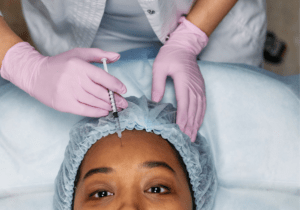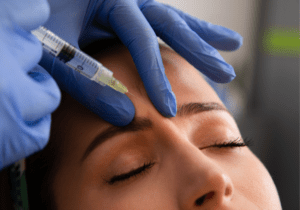Laser skin lightening treatments have become a popular way to address skin discoloration, hyperpigmentation, and other unsightly marks.
With the increasing demand for clearer and brighter skin, understanding the intricacies of this process is vital for anyone considering treatment.
In this detailed guide, we’ll walk you through everything you need to know about laser skin lightening treatments, including how they work, the different types available, and what to expect before and after the procedure.
What Is Laser Skin Lightening?
Laser skin lightening, also known as laser skin resurfacing, is a cosmetic procedure that uses concentrated beams of light to improve the skin’s tone, texture, and appearance.
It can also effectively treat a range of skin conditions, including scarring from acne or injury, sun damage, and birthmarks.
How the Procedure Works
Laser skin lightening treatments direct short, concentrated pulsating beams of light at the skin. This laser energy targets unwanted pigment, which is then removed by the body’s natural healing process, making way for new, unblemished skin to appear.
In the coming weeks, new skin cells that form to achieve a visibly tighter, younger-looking surface.
Different Types of Laser Skin Lightening Treatments
When it comes to laser skin lightening treatments, there are several options available, including:
Fractional Lasers
Fractional lasers deliver small columns of heat into the skin, sparing the surrounding tissue. This approach promotes faster healing and collagen production.
Non-Ablative Lasers
These lasers do not wound the skin, making them a gentler option. However, they may require multiple treatments to achieve the desired results.
Ablative Lasers
Ablative lasers are more aggressive and can offer a more dramatic result. They remove the top layer of skin, which leads to a longer recovery but may be necessary for more severe conditions.
Your dermatologist will advise you on the type of laser most suitable for your condition and skin type.
The Treatment Process and What to Expect
Prior to treatment, you will have a consultation with a specialist to discuss your medical history and your goals for the procedure. The actual treatment will involve the following steps:
- Your skin will be cleansed, and an anesthetic may be applied to minimize discomfort.
- The laser will be calibrated to your specific treatment parameters.
- The technician will pass the laser over the skin, targeting the areas of pigmentation.
- After treatment, your skin may be red and swollen, similar to a sunburn, for a few days.
- Over the next week or so, your skin will start to peel and regenerate.
Aftercare and Recovery
Proper aftercare is crucial for the best possible outcome. This includes:
- Keeping the skin hydrated with a gentle moisturizer
- Using sun protection to prevent new pigmentation issues
- Avoiding makeup and harsh products until your skin is fully healed
You’ll also need to attend follow-up appointments to monitor your healing progress and may require multiple treatments for optimal results.
The Risks and Benefits of Laser Skin Lightening
As with any medical procedure, laser skin lightening treatments come with both risks and benefits.
The benefits include a more even skin tone and improved skin texture.
However, the risks may include temporary or permanent changes in skin color, infection, and scarring. It is critical to choose a board-certified dermatologist with experience in laser treatments to minimize these risks.
The Takeaway
Laser skin lightening can be a game-changer for those dealing with unwanted pigmentation issues. That said, it’s important to approach this procedure with caution and fully understand what’s involved.
By following this guide and seeking out professional advice, you can make an informed decision about whether laser skin lightening is right for you.
Schedule a Laser Skin Lightening Consultation
Ready to take the next step? If so, please call our office today to schedule a laser skin lightening consultation with one of our top-notch specialists!







